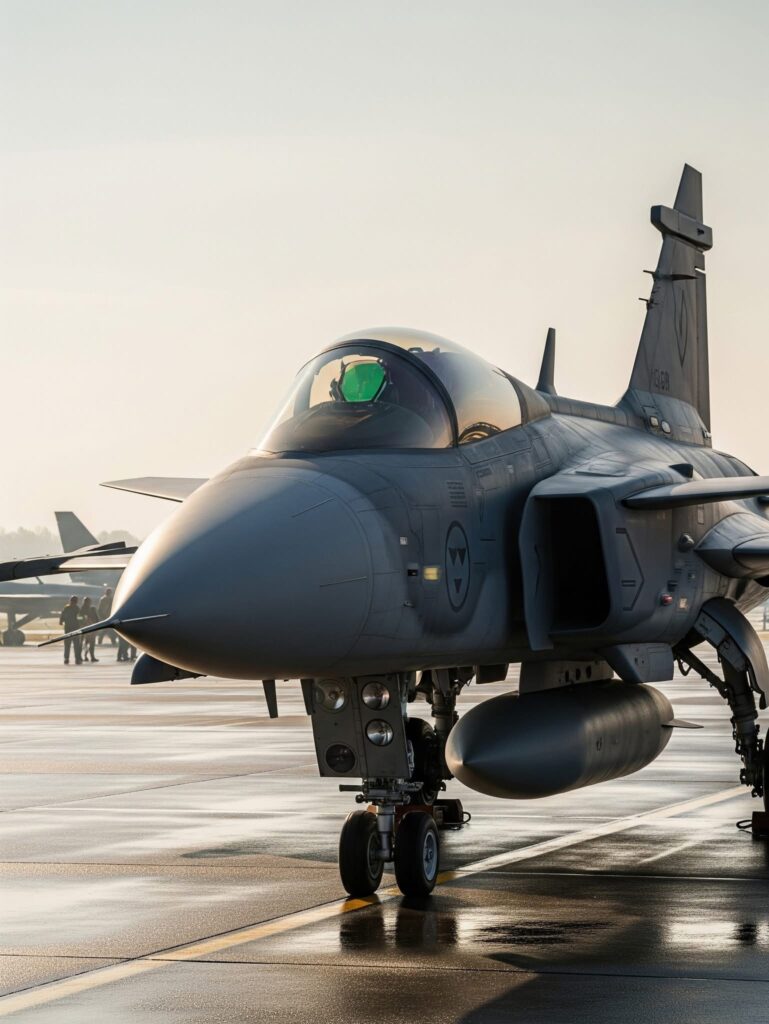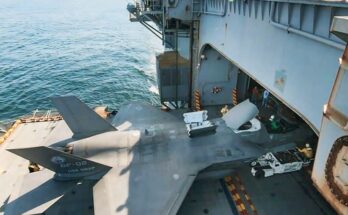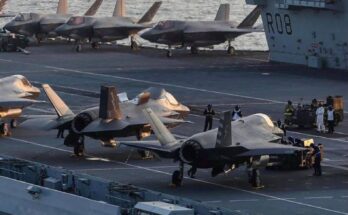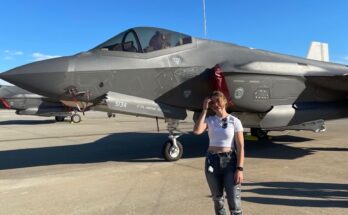
The Saab Jas-39 Gripen is one of the most versatile and cost-effective multirole fighter aircraft in service today. Developed by Sweden in the late 20th century, the Gripen was designed to replace the Saab 35 Draken and Saab 37 Viggen, giving the Swedish Air Force a modern fighter that could handle both defensive and offensive missions. First flown in 1988 and introduced into service in the mid-1990s, the aircraft has steadily evolved through multiple versions, maintaining its reputation as a flexible platform suited for both national defense and international operations.
One of the defining characteristics of the Gripen is its design philosophy. Sweden sought an aircraft that could operate from short, improvised airstrips, a necessity for defending a country with long borders and a relatively small population. As a result, the Gripen can take off and land on roads as short as 800 meters, requiring only minimal ground support. This capability reflects Sweden’s strategy of dispersing its air force in the event of conflict, making it harder for an enemy to neutralize its aircraft on the ground.
The Gripen uses a canard-delta wing configuration, giving it excellent agility, stability, and control at various speeds and altitudes. The airframe is built with a focus on efficiency, combining light weight with strength. Its single-engine design, powered by the Volvo RM12 in early models and the General Electric F414 in later variants, delivers a good balance between performance and fuel economy. Though not as fast as some larger fighters, the Gripen is known for its reliability and low operating costs, an important factor for smaller nations looking to maintain a capable air force without the enormous expense of aircraft such as the Eurofighter Typhoon or F-35.
Avionics and systems integration are key strengths of the Gripen. From the beginning, it was designed as a true multirole fighter, capable of switching between air-to-air and air-to-ground missions quickly. Its cockpit features modern displays, an advanced data link, and electronic warfare systems that provide pilots with a high level of situational awareness. Later variants, such as the Gripen E, are equipped with active electronically scanned array (AESA) radars and improved sensors, keeping the aircraft competitive against more modern rivals.
Internationally, the Gripen has found success with several air forces. Beyond Sweden, countries such as South Africa, Hungary, the Czech Republic, Thailand, and Brazil have adopted or ordered the aircraft. Each operator values its affordability, relatively simple maintenance, and ability to integrate with NATO and non-NATO systems. Brazil, in particular, has played a significant role in the program, with Saab partnering with Brazilian industry to co-produce and further develop the Gripen E/F variants.
In combat and training exercises, the Gripen has proven to be an effective opponent. While it has not been tested extensively in large-scale wars, its performance in international exercises has demonstrated that it can match or outperform more expensive fighters in certain conditions. Its emphasis on flexibility, survivability, and cost-efficiency ensures that it remains a practical choice for many air forces worldwide.
In summary, the Jas-39 Gripen represents a smart balance between capability and affordability. It is not the largest or most powerful fighter in service, but its adaptability, modern systems, and unique operating features make it a valuable tool for both Sweden and its international partners. The Gripen continues to evolve, proving that even a relatively small nation can produce a world-class combat aircraft.


